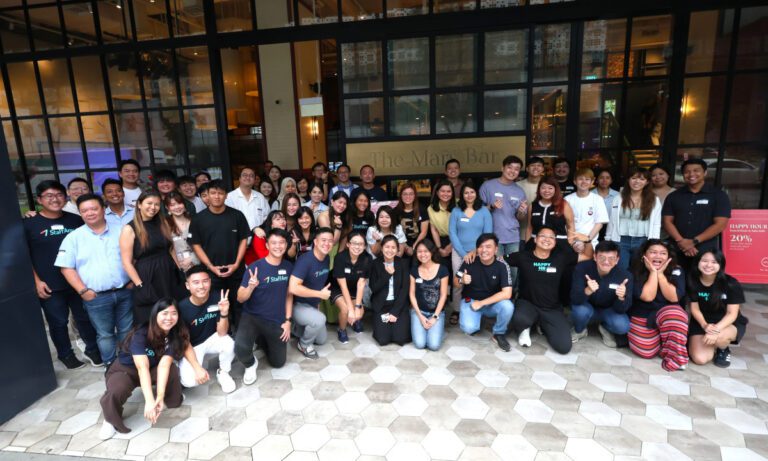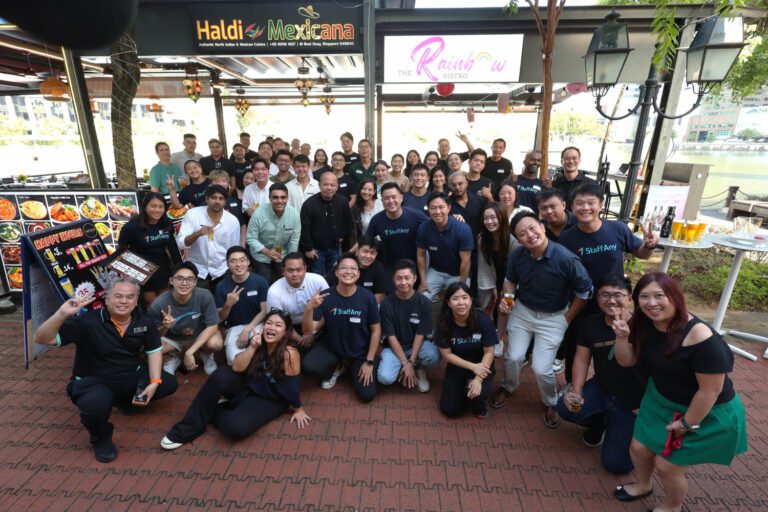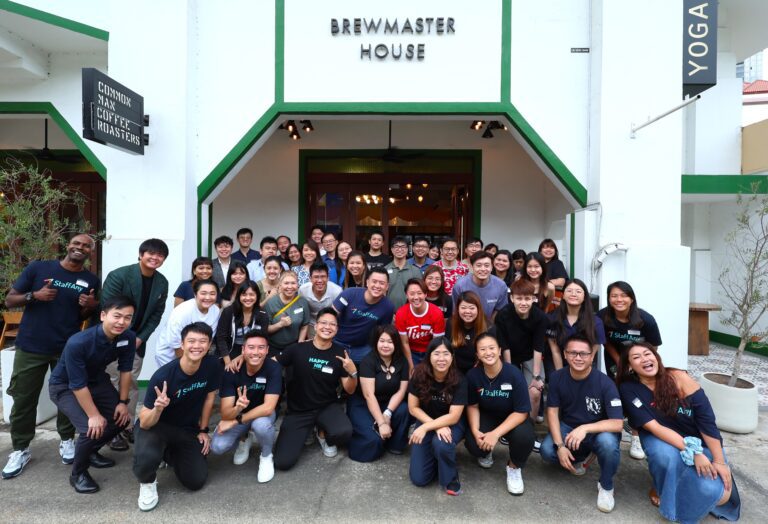In the bustling world of hospitality, ensuring a smooth restaurant closing process is as crucial as the opening act. The meticulous execution of a restaurant closing checklist guarantees the safety and security of your establishment, as well as sets the stage for a seamless transition to the next working day.
In this article, we explore the essential tasks that should make it to your restaurant closing checklist, along with valuable tips on crafting a comprehensive one. And, of course, we’ll shed light on how StaffAny, with our resourceful features, can elevate the efficiency of your closing routine. Let’s get started!
What Is a Restaurant Closing Checklist and Why It’s Essential?
A restaurant closing checklist is a detailed and systematic guide that outlines the tasks required to properly close a restaurant at the end of a day’s service. This checklist is essential for ensuring nothing is overlooked in the often-hectic atmosphere of closing. It enhances efficiency by providing a step-by-step plan for staff to follow, which helps save time and energy costs by ensuring that equipment is shut down promptly.
Beyond efficiency, a restaurant closing checklist is critical in maintaining compliance with health and safety regulations. The food service industry is subject to strict guidelines, and the checklist acts as a safeguard to ensure that cleaning, sanitation, and other vital tasks are performed following these regulations. This reduces the risk of legal complications and penalties.
Read more: 15 Innovative Ideas to Grow Your Restaurant Business
Essential Tasks for Your Restaurant Closing Checklist
When it comes to closing a restaurant, a systematic approach is key to ensuring that every detail is attended to, paving the way for a smooth start the next day. Let’s delve into the specific tasks that should make it to your closing checklist, and how StaffAny’s features can enhance the efficiency of some of these processes.
1. Cleaning and Sanitising
Cleaning and sanitising is a foundational task in your restaurant closing checklist. It involves not only surface cleaning but also deep cleaning of kitchen equipment, utensils, and dining areas. This process ensures that any lingering bacteria or food residues are removed, maintaining a safe and hygienic environment for both customers and staff. In addition, proper sanitation prevents contamination, which is essential in the food service industry to avoid health violations and potential foodborne illnesses.
2. Inventory Check
The inventory check is more than just counting stock; it involves assessing the condition of ingredients and supplies. This task helps you identify items that need reordering to avoid shortages and ensures that products nearing their expiry date are used promptly, reducing waste and cost. Effective inventory control plays a significant role in managing expenses and preventing food spoilage, ultimately contributing to your restaurant’s profitability.
3. Cash Handling
Cash handling at the end of the day is a task that requires precision and accuracy. Securely storing the day’s earnings is vital to prevent potential loss or theft. Balancing the cash register helps identify discrepancies and ensures that all transactions are accurately recorded. This financial diligence is essential not only for maintaining your restaurant’s financial integrity but also for accountability and transparency in your operations.
4. Equipment Shutdown
Properly shutting down kitchen equipment and appliances is more than just turning switches off. It involves ensuring that all equipment is safely powered down, unplugged, and cleaned if necessary. This not only conserves energy but also prolongs the lifespan of your equipment and minimises the risk of accidents, such as fires or electrical issues, which can be costly and disruptive to your restaurant’s operations.
5. Security Measures
Security measures are essential to safeguard your restaurant and its assets during non-operational hours. This task includes locking all doors and windows, setting alarms, and conducting thorough security checks to ensure the premises are secure from unauthorised access. By implementing these security measures, you reduce the risk of break-ins, vandalism, or other security breaches, helping protect your investment and maintaining a safe environment.
6. Waste Disposal
Waste disposal is not just about taking out the trash. It entails following local regulations and disposing of waste and recyclables properly. Emptying and cleaning trash bins and ensuring waste is correctly separated contribute to your restaurant’s environmental responsibility. Compliance with waste disposal regulations not only avoids fines but also demonstrates your commitment to sustainable and responsible business practices.
7. Staff Duties
Assigning specific closing duties to your staff ensures that every aspect of closing is covered. This includes tasks like cleaning responsibilities and securing the premises. Clear delegation of responsibilities reduces confusion and ensures that every staff member knows their role in the closing process, promoting teamwork and accountability.
Streamlining staff duties during restaurant closing becomes a breeze with StaffAny’s Employee Scheduling Software. With the auto-scheduling feature, you can swiftly and accurately assign staff to shifts with a single click, reducing scheduling errors and saving valuable time. Moreover, StaffAny’s real-time schedule update feature keeps your team in the loop with the latest schedule, automatically highlighting any conflicts.
8. Documentation
In the intricate tapestry of restaurant management, meticulous documentation is vital. This includes maintaining detailed logs of temperature records, maintenance requests, and incidents during shifts. Beyond being a routine task, it serves as a valuable resource for identifying trends, addressing issues, and ensuring compliance with health and safety regulations.
StaffAny’s Connected Workforce Solution seamlessly integrates this process into your operations, elevating employee productivity and task management. The platform enables real-time progress tracking, enhanced collaboration, and provides complete visibility into daily activities, fostering data-driven decision-making. This unified approach can streamline documentation and empower your team, ensuring efficient operations and readiness for health inspections or potential legal matters in the future.
Read more: 21 Creative Restaurant Name Ideas for Business Owners
Tips for Creating a Comprehensive Restaurant Closing Checklist
Creating an effective restaurant closing checklist is vital to your restaurant’s success. To ensure it serves its purpose, consider these four essential tips:
1. Customise Your Checklist to Your Restaurant’s Needs
Tailor your checklist to your specific restaurant’s requirements. Not all restaurants are the same, and establishments have different closing procedures. Consider the size of your restaurant, the type of cuisine you serve, and the layout of your kitchen and dining areas. By customising the checklist to your restaurant’s unique needs, you’ll ensure that it remains practical and relevant, addressing the tasks that matter most in your daily operations.
2. Make Your Checklist Easy to Follow
Your checklist should be user-friendly and easy to understand. Use clear and concise language, avoid jargon or overly technical terms, and consider using visuals or diagrams to illustrate complex tasks. Ensure that each step is straightforward and logically ordered, so your staff can easily follow the checklist without confusion. An easy-to-follow checklist minimises errors and increases the likelihood that tasks are completed accurately and efficiently.
3. Train Your Staff on the Checklist
Providing training and guidance to your staff on how to use the checklist is crucial. Ensure that they understand the purpose of each task and how it contributes to the restaurant’s smooth closure. Encourage questions and clarifications, and conduct periodic refresher training to reinforce the importance of the checklist. Well-trained staff are more likely to use the checklist effectively and understand their responsibilities in the closing process.
4. Review and Update Your Checklist Regularly
The restaurant industry is dynamic, and your closing checklist should evolve. Regularly review and update your checklist to reflect changes in your operations, new regulations, or emerging best practices. Consider conducting these reviews with input from staff who use the checklist regularly, as they can provide valuable insights into its effectiveness and suggest improvements. A checklist that’s kept up-to-date remains a relevant and powerful tool in maintaining the efficiency and quality of your closing procedures.
5. Leverage StaffAny’s Onsite Timeclock
In the dynamic environment of restaurant management, ensuring accurate timekeeping is crucial, especially during the closing process. StaffAny’s Onsite Timeclock comes to the rescue, addressing a common challenge where employees might forget to clock out even after completing the closing tasks.
StaffAny’s flexible clock-out feature allows employees to clock in at different sites. This flexibility is particularly valuable for staff involved in closing duties across various locations. With StaffAny, the seamless tracking of time across multiple sites becomes effortless. The software neatly categorises work hours, making transitions between locations smooth and efficient.
Read more: 16 Components of Restaurant and Culinary Operations
Streamline Your Staff Schedule with StaffAny’s Employee Scheduling Software
A well-structured restaurant closing checklist is an indispensable tool for any restaurant. It can streamline operations, ensure compliance, maintain quality, and contribute to cost control and staff accountability, as well as set the stage for efficient planning for the next day’s service. To further enhance the effectiveness of your restaurant operations, consider incorporating StaffAny’s free employee scheduling software.
StaffAny’s employee scheduling software offers a holistic solution for managing staff efficiently, including for doing the restaurant closing checklist. Here are some features that might benefits you:
1. Real-Time Availabilities
In the fast-paced restaurant industry, knowing your team’s availability is crucial. StaffAny’s software keeps you connected with your workforce, allowing you to understand who is on leave and which part-timers are available. This real-time insight enables you to plan your A-team effectively and ensures optimal staffing levels during critical closing hours.
2. Reduce Scheduling Errors
The visual representation of staff schedules across multiple outlets in one view minimises scheduling errors. StaffAny highlights clashing shifts, making it easier for you to manage employees across different locations. This feature is particularly beneficial during the restaurant closing checklist, where precise scheduling is vital to ensure that all closing tasks are adequately covered.
3. Get Better Visibility of Labour Costs While Scheduling
Managing labour costs is a constant challenge for restaurant owners. StaffAny’s software automatically updates you on weekly labour costs based on your schedule. This visibility allows you to optimise your workforce, ensuring that you meet your target manpower budget. By integrating this feature into your scheduling process, you can lower operating costs and enhance your restaurant’s overall profitability.
By seamlessly integrating scheduling tasks with the closing checklist, you can enhance the precision of your daily operations and create a streamlined process from closing to the next day’s opening. Take control of your restaurant’s efficiency and profitability by utilising StaffAny today. Plan better, manage costs, and stay ahead of the curve with a tool designed to meet the unique needs of your restaurant!





